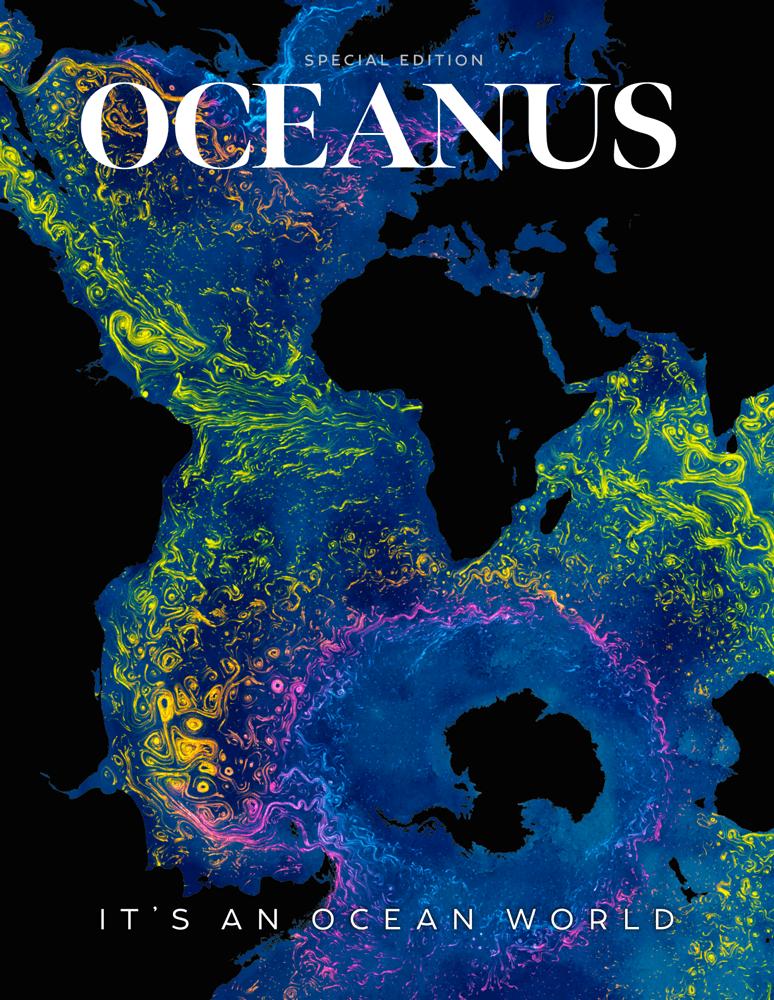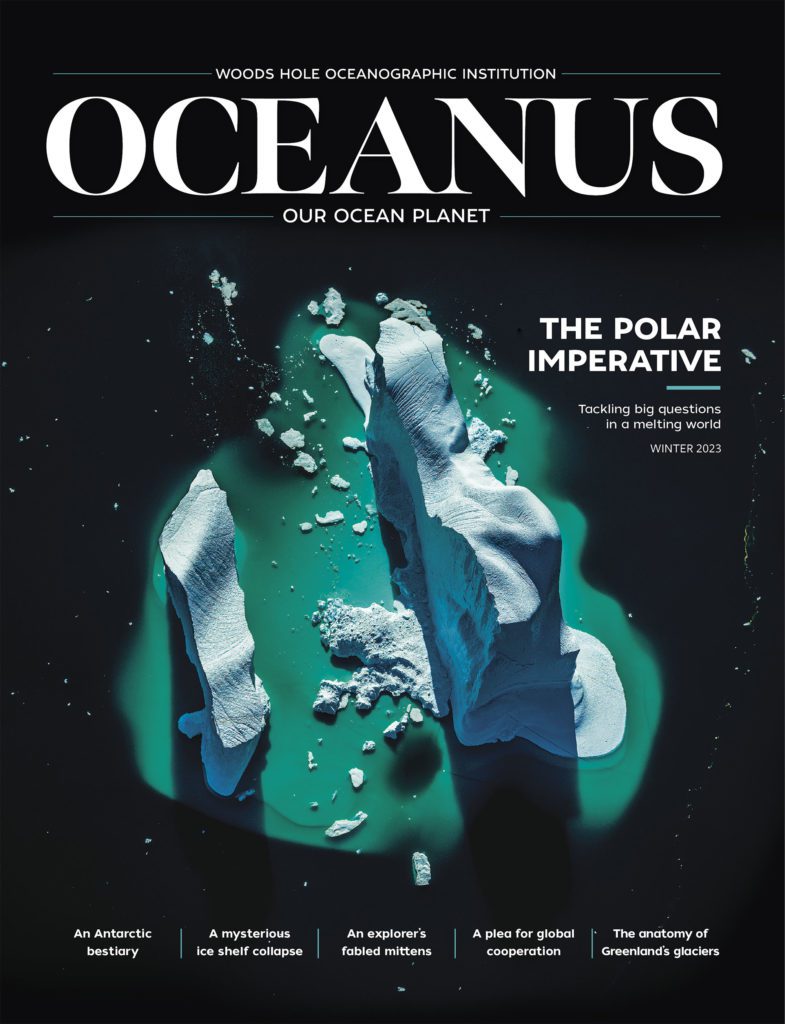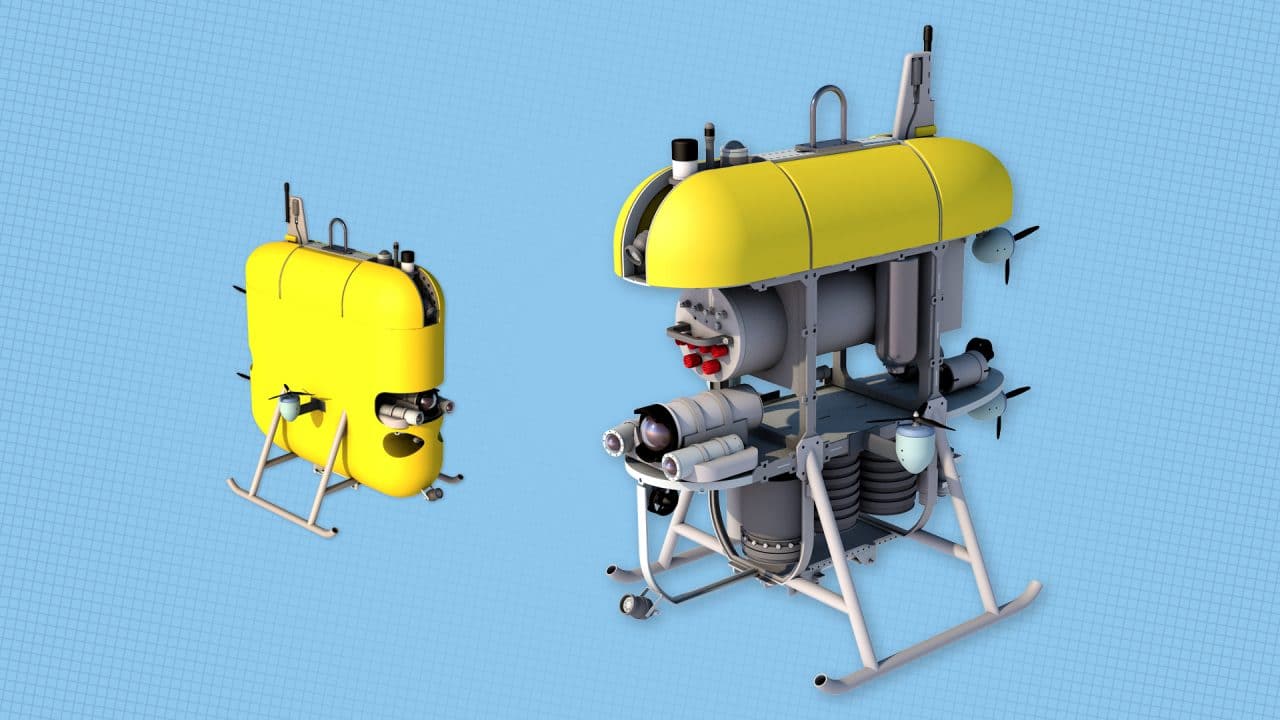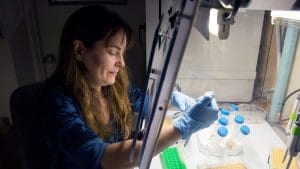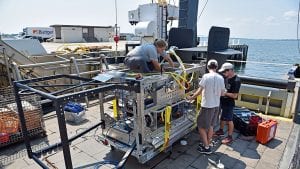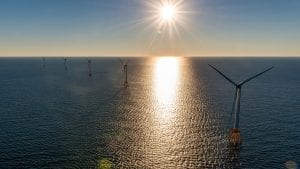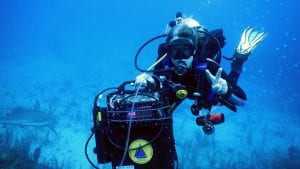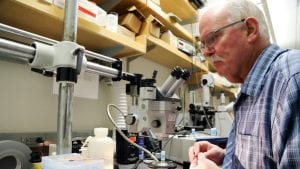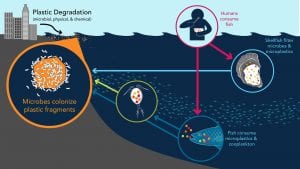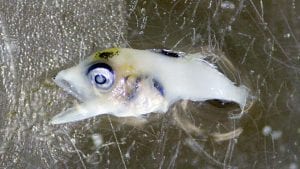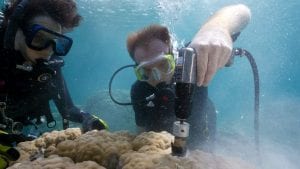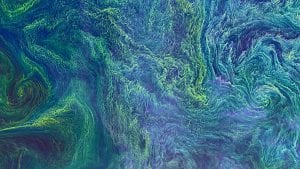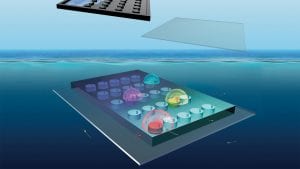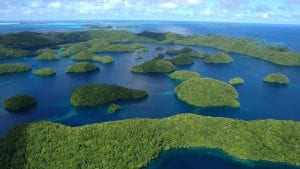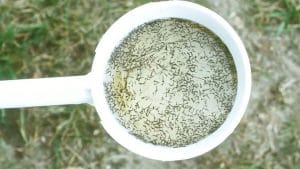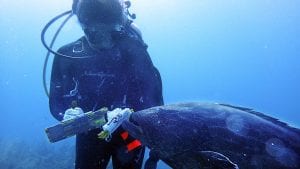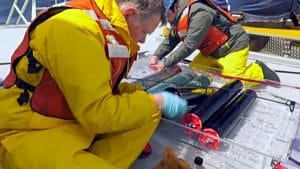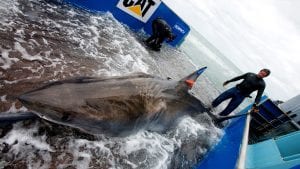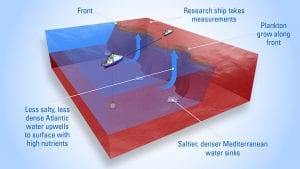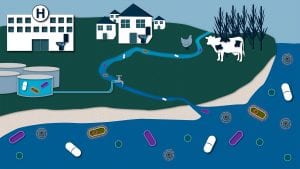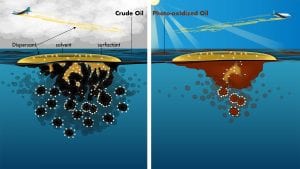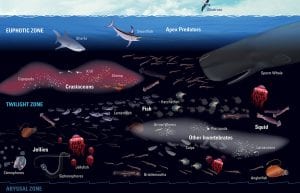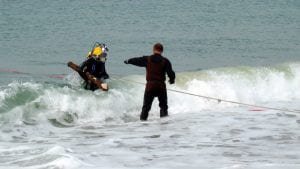Ocean Life
Mesobot, Follow that Jellyfish!
WHO scientists and engineers are developing an innovative autonomous deep-sea vehicle with hovering and manuevering capabilities that will allow it to follow animals without disturbing their environment and behavior.
New Techniques Open Window into Anatomy of Mollusks
Woods Hole Oceanographic Institution (WHOI) scientists are using advanced medical imaging techniques and diagnostic tools…
Round Up the Unusual Suspects
A variety of genetic techniques are advancing ocean scientists' ability to identify which organisms live…
The Deep-See Peers into the Depths
Decades of research from many WHOI scientists and engineers have culminated in a multifaceted vehicle…
Harnessing the Power
Can wind developers and ocean scientists work together to get US offshore wind cranking?
A DISCO in the Ocean
To investigate coral bleaching, WHOI scientists figure out a novel way to take direct measurements…
Do Microplastics in the Ocean Affect Scallops?
WHOI scientist Scott Gallager is making field observations and conducting lab experiments to explore the…
Junk Food
An estimated eight million tons of plastics enter our oceans each year, yet only one…
The Secret Tuna Nursery
WHOI biologists and physical oceanographers combine expertise to reveal a place in the ocean where…
How Do Corals Build Their Skeletons?
WHOI scientists discovered precisely how ocean acidification affects coral skeletons’ a factor that will help…
The Living Breathing Ocean
Rainforests have been dubbed the Earth's lung, but like us, our planet has two lungs.…
A Lobster Trap for Microbes
What if you wanted to observe what microbes in the ocean are doing? First, you…
Searching for ‘Super Reefs’
Some corals are less vulnerable to ocean acidification. Can the offspring from these more resilient…
Marshes, Mosquitoes, and Sea Level Rise
In the 1930s, the Cape Cod Mosquito Control Project dug approximately 1,500 miles of ditches…
The Unseen World on Coral Reefs
We have learned that microbial communities on and within us—a microbiome—keep people healthy. Corals reefs…
The Recipe for a Harmful Algal Bloom
Harmful algal blooms can produce toxins that accumulate in shellfish and cause health problems and…
Life at the Edge
What makes the shelf break front such a productive and diverse part of the Northwest…
Sharks Take ‘Tunnels’ into the Depths
By tagging sharks, WHOI scientists have revealed their surprising behavior.
Forecasting Where Ocean Life Thrives
The ocean, like the atmosphere, has "fronts," and it's hardly quiet on them. In fact,…
The Bacteria on Your Beaches
The widespread use of antibiotics is increasing the spread of antibiotic-resistant bacteria—perhaps into the ocean,…
A Long Trail of Clues Leads to a Surprise About Oil Spills
Scientists followed evidence from the 2010 Deepwater Horizon oil spill to discover an unexpected phenomenon.
Reassessing Guidelines for Oil Spill Cleanups
A new discovery could change the way officials approach oil spill cleanups.
Mission to the Ocean Twilight Zone
The twilight zone is a part of the ocean 660 to 3,300 feet below the…
Tracking Unexploded Munitions
U.S. coastlines still have a lot of unexploded ordnance, or UXOs, left offshore by military exercises in…
